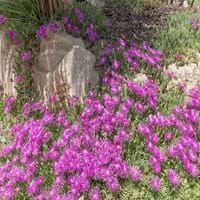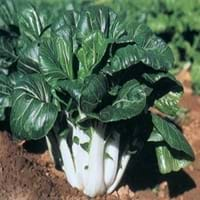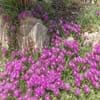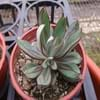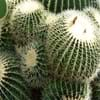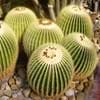Life Span
Perennial
Annual or Biennial
Type
Flowering Plants
Vegetable
Origin
Southern Africa, South Africa
Europe
Types
Not Available
Brassica rapa subsp. pekinensis
Brassica rapa subsp. chinensis
Brassica rapa var. rapifera
Brassica rapa subsp. nipposinica
Brassica rapa subsp. perviridis
Habitat
By seashore, gardens
Not Available
USDA Hardiness Zone
Not Available
6-9
AHS Heat Zone
Not Available
9-3
Sunset Zone
Not Available
A1, A2, A3, H1, H2, 1a, 1b, 2a, 2b, 3a, 3b, 4, 5, 6, 7, 8, 9, 10, 11, 12, 13, 14, 15, 16, 17, 18, 19, 20, 21, 22, 23, 24
Habit
Not Available
Clump-Forming
Minimum Height
Not Available
Minimum Width
Not Available
Flower Color
Not Available
Yellow
Flower Color Modifier
Not Available
Bicolor
Fruit Color
Non Fruiting Plant
Not Available
Leaf Color in Spring
Not Available
Green, Light Green
Leaf Color in Summer
Not Available
Not Available
Leaf Color in Fall
Not Available
Not Available
Leaf Color in Winter
Not Available
Not Available
Leaf Shape
Succulent
Obovate
Plant Season
Spring, Summer, Fall, Winter
Spring, Fall, Winter
Sunlight
Full Sun, Partial Sun
Full Sun, Partial Sun
Growth Rate
Not Available
Fast
Type of Soil
Not Available
Loam, Sand
The pH of Soil
Not Available
Neutral
Soil Drainage
Well drained
Well drained
Bloom Time
Not Available
Spring, Late Spring, Early Summer, Summer, Late Winter
Tolerances
Not Available
Drought
Where to Plant?
Container, Ground, Pot
Ground
How to Plant?
Stem Planting, Transplanting
Seedlings
Plant Maintenance
Medium
Medium
Watering Requirements
Average Water Needs, Do Not over Water, Never Over-water, Requires watering in the growing season
Do Not over Water, Water in morning to avoid prompting diseases
In Summer
Average Water
Lots of watering
In Spring
Average Water
Moderate
In Winter
Average Water
Average Water
Soil pH
Not Available
Neutral
Soil Type
Not Available
Loam, Sand
Soil Drainage Capacity
Well drained
Well drained
Sun Exposure
Full Sun, Partial Sun
Full Sun, Partial Sun
Pruning
Remove damaged leaves, Remove dead branches, Remove dead leaves
Remove damaged leaves, Remove dead branches, Remove dead leaves
Fertilizers
All-Purpose Liquid Fertilizer
All-Purpose Liquid Fertilizer
Pests and Diseases
Red blotch
Red blotch
Plant Tolerance
Drought
Drought
Flower Petal Number
Single
Single
Showy Fruit
Not Available
No
Edible Fruit
Not Available
No
Fragrant Fruit
Not Available
No
Fragrant Leaf
Not Available
Yes
Fragrant Bark/Stem
Not Available
Yes
Showy Foliage
Not Available
Yes
Showy Bark
Not Available
No
Foliage Texture
Bold
Coarse
Foliage Sheen
Not Available
Not Available
Invasive
Sometimes
Sometimes
Self-Sowing
Not Available
Yes
Attracts
Butterflies
Aphids, Flea beetles, white worms
Allergy
Not Available
Not Available
Aesthetic Uses
Beautification, Bouquets, Cottage Garden, Decorating walls, Ground Cover, Landscape Designing, Showy Purposes, Used for decorating walls, fences, gates, hedges, etc.
Not Used For Aesthetic Purpose
Beauty Benefits
Not Available
Not Available
Environmental Uses
Food for insects
Air purification
Medicinal Uses
No Medicinal Use
Antirheumatic, Resolvent
Part of Plant Used
Flowers
Leaves, Stem
Other Uses
Decoration Purposes, Showy Purposes, Used as Ornamental plant
For making oil
Used As Indoor Plant
No
No
Used As Outdoor Plant
Yes
Yes
Garden Design
Container, Edging, Groundcover, Mixed Border, Rock Garden, Wall
Container, Edible, Herb / Vegetable
Botanical Name
DELOSPERMA
BRASSICA rapa
Common Name
Trailing Iceplant
Bok Choy, Broccoli Raab, Chinese Cabbage, Choy Sum, Field Mustard, Pak Choi, Tatsoi, Turnip
In Hindi
Delosperma cooperi
Bok Choy
In German
Mittagsblume
Bok Choy
In French
Delosperma cooperi
Bok Choy
In Spanish
Delosperma cooperi
Bok Choy
In Greek
Delosperma cooperi
Bok Choy
In Portuguese
Delosperma cooperi
Bok Choy
In Polish
Delosperma cooperi
Bok Choy
In Latin
Delosperma cooperi
Bok Choy
Phylum
Not Available
Tracheophyta
Class
Magnoliopsida
Magnoliopsida
Order
Caryophyllales
Brassicales
Family
Aizoaceae
Brassicaceae
Genus
Caryophyllales
Brassica
Clade
Angiosperms, Core eudicots, Eudicots
Angiosperms, Eudicots, Rosids
Tribe
Not Available
Not Available
Subfamily
Ruschioideae
Not Applicable
Number of Species
Not Available
Importance of Delosperma cooperi and Bok Choy
Want to have the most appropriate plant for your garden? You might want to know the importance of Delosperma cooperi and Bok Choy. Basically, these two plants vary in many aspects. Compare Delosperma cooperi and Bok Choy as they differ in many characteristics such as their life, care, benefits, facts, etc. Every gardener must at least have the slightest clue about the plants he wants to plant in his garden. Compare their benefits, which differ in many ways like facts and uses. The medicinal use of Delosperma cooperi is No Medicinal Use whereas of Bok Choy is Antirheumatic and Resolvent. Delosperma cooperi has beauty benefits as follows: Not Available while Bok Choy has beauty benefits as follows: Not Available.
Compare Facts of Delosperma cooperi vs Bok Choy
How to choose the best garden plant for your garden depending upon its facts? Here garden plant comparison will help you to solve this query. Compare the facts of Delosperma cooperi vs Bok Choy and know which one to choose. As garden plants have benefits and other uses, allergy is also a major drawback of plants for some people. Allergic reactions of Delosperma cooperi are Not Available whereas of Bok Choy have Not Available respectively. Having a fruit bearing plant in your garden can be a plus point of your garden. Delosperma cooperi has no showy fruits and Bok Choy has no showy fruits. Also Delosperma cooperi is not flowering and Bok Choy is not flowering . You can compare Delosperma cooperi and Bok Choy facts and facts of other plants too.
